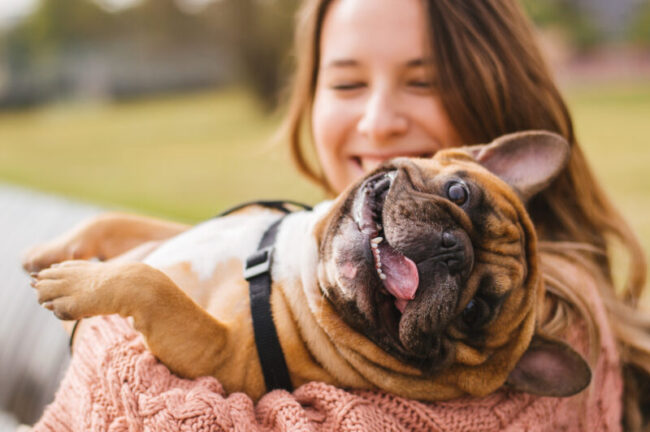Key Takeaways
- Designing a dog-friendly backyard starts with prioritizing safety, comfort, and enrichment for your pet.
- Safe barriers, shaded areas, and appropriate landscaping reduce the risk of accidents and escapes.
- Enrichment elements, proper training, and regular maintenance create a happier and healthier outdoor experience.
Why a Safe Backyard Matters for Dogs
A well-designed backyard is more than a convenience—it’s essential to providing dogs the opportunity to exercise, explore, and enjoy the outdoors in a controlled, secure environment. Outdoor spaces are the setting for countless games of fetch, training sessions, and bonding moments, making them key to your pet’s physical and emotional health. Unfortunately, inadequate barriers or stimulating features can increase the risk of escape, injury, or behavioral issues. Secure dog fence solutions are becoming increasingly popular because they offer peace of mind and adapt to various dog breeds, sizes, and temperaments, allowing families to give their pets the gift of safety and freedom.
According to safety guidance from the American Society for the Prevention of Cruelty to Animals, or ASPCA, pet safety in outdoor environments should be a top priority, particularly when dogs are left unattended. Dangers such as busy roads, neighborhood wildlife, or even ingestible toxins can lurk just beyond the fence line. Thoughtful backyard design significantly reduces opportunities for mishap while encouraging healthy, active lifestyles for dogs of all ages. Pet owners who address safety concerns can prevent many unwanted scenarios that lead to stressful emergencies or costly veterinary visits.
Assessing Your Space: What to Consider First
Creating a dog-friendly yard starts with meticulously evaluating your property’s features and potential hazards. Begin by walking your yard at your dog’s level. Look for small gaps beneath fences, loose boards, or uneven ground – all of which can serve as escape routes for adventurous pets. Breeds known for their problem-solving skills, such as Border Collies or Jack Russell Terriers, can be particularly adept at discovering these vulnerabilities, making a comprehensive inspection essential.
In addition to structural evaluations, closely examine your landscaping for materials that can be chewed or dug up, such as wood chips or ornamental stones. Identifying any toxic plants, such as oleander or foxglove, is crucial, as is ensuring that no harmful fertilizers or mulches are within your dog’s reach. Taking the time to research which plants are safe and which are not can prevent serious health issues.
Moreover, consider the environmental context of your yard. If it borders wooded areas, your dog might encounter wildlife such as deer or raccoons, posing a risk from potential encounters and diseases carried by these animals. A yard near a busy street may expose your pet to the stress of heavy traffic noise, which can lead to anxiety and develop reactive behaviors. Understanding your dog’s sensory experiences in their environment—what they see, hear, and smell—can help you identify potential stressors before they become a problem.
For households with multiple dogs, assessing whether the shared outdoor space accommodates everyone’s needs is important. Consider play areas, private spots for each dog to retreat to, and shaded areas where they can cool off. By creating designated spaces for each dog, you can minimize territorial disputes and reduce incidents of resource guarding, ultimately leading to a more harmonious outdoor experience for all pets involved.
Choosing the Right Barrier for Your Pet’s Needs
Selecting the right fencing means understanding your dog’s unique instincts and abilities. While some dogs are content with a basic barrier, others will exploit even the smallest weakness. Breeds such as Huskies, Border Collies, and Terriers are renowned for digging under or leaping over ordinary fences. Older or less mobile pets may not need tall barriers, yet establishing visible, physical boundaries remains important.
Fence height and material matter—tall, solid panels reduce line-of-sight stressors like passing animals or playful neighborhood children, while mesh or layered options keep small breeds secure. Consider deeper posts or underground guards for energetic diggers. The American Kennel Club recommends that fences be at least six feet high for most breeds and supports the use of rounded or smooth surfaces to prevent injuries. It’s wise to avoid fences with wide gaps, protruding nails, or sharp hardware; these details make a significant difference for long-term safety.
Enrichment and Comfort: More Than Just Fencing
Securing your yard is just the beginning; creating a vibrant and enriching environment can significantly reduce stress and behavioral problems in dogs. To enhance comfort, consider incorporating shaded areas using trees, retractable awnings, or specially designed shelters that offer relief from heat, rain, and cold weather. Dogs benefit greatly from having spaces to relax, observe wildlife, or enjoy the fresh breeze.
Incorporating dog-safe landscaping elements like lavender, rosemary, and marigolds provides sensory stimulation with their colors and fragrances and ensures that these plants are non-toxic for your pets.
To encourage play and prevent boredom-related chewing on household items or plants, regularly rotate high-quality outdoor toys and chewables. Creating a designated area for dogs, such as a shallow sandbox or a patch of mulch, allows them to safely indulge their natural digging instincts.
Consider adding agility equipment such as tunnels, ramps, and weave poles for active breeds. These elements cater to their need for physical activity and mental challenges, fostering a healthier outlet for their energy.
Finally, frequently changing enrichment options or designing seasonally themed spaces will help keep your dog’s routine dynamic and engaging, allowing it to express its instincts in healthy and appropriate ways.
Safe Water Features and Cooling Areas
Ensuring access to fresh water and providing relief from hot temperatures are essential for the well-being of outdoor dogs. Equipping play areas with automatic refill bowls or elevated water dispensers is a practical measure to prevent dehydration during playtime. Adding a splash pool can enhance their enjoyment, but it’s important to ensure that it is shallow with slip-resistant surfaces to facilitate easy entry and exit. Additionally, it’s vital to avoid installing features that can collect stagnant water, as these can pose health hazards by attracting bacteria or mosquitoes.
Creating multiple comfort zones, including sun-basking areas and shaded retreats, allows dogs to self-regulate their comfort levels according to their needs. Natural shade can be provided by trees, pergolas, or even a simple tarp to offer protection during unpredictable weather conditions. In regions with high summer temperatures, incorporating cooling mats, misting systems, or paw-friendly grass not only enhances their comfort but also promotes fun and reduces the risk of overheating, ensuring an enjoyable outdoor experience.
Ha,zard Prevention and Regular Maintenance
Maintaining a safe yard for pets is essential and involves ongoing vigilance. Regularly inspect your outdoor space for potential hazards such as tools, scrap wood, lawn chemicals, and unsecured compost bins, all of which can pose risks to curious pets. To enhance safety, ensure that all hazardous materials are stored securely out of reach, and perform routine checks along fence lines for any signs of digging, chewing, or damage caused by weather or wildlife.
The ASPCA recommends paying particular attention to toxic plants that may be found in your yard, including azaleas, sago palms, and oleanders. These plants can be harmful if ingested. Additionally, establish autonomy barriers around garages, sheds, and trash bins to prevent access to potentially dangerous areas. Implementing these simple yet effective precautions can significantly reduce the risk of poisoning, choking incidents, or accidental entrapments for your pets. Furthermore, conducting regular yard inspections—especially following storms or changes in seasons—can greatly enhance the overall safety of your pet’s environment.
Landscaping with Dogs in Mind
Creating a pet-friendly yard requires careful material selection and thoughtful landscaping to ensure both beauty and durability amidst canine activity. Ground cover options like artificial turf, pea gravel, or cedar mulch not only provide a soft surface for pet paws but also withstand heavy foot traffic without wear. It is crucial to avoid harmful materials such as cocoa mulch, which can be toxic to dogs, and instead opt for pet-safe alternatives.
For dogs that love to dig or nibble on plants, physically protecting flower beds and vegetable patches with barriers such as decorative fencing or plant cages can effectively safeguard your greenery and pets. Additionally, incorporating winding paths or trails helps to direct dogs away from muddy areas and delicate garden spots, minimizing damage.
Using raised beds, rock gardens, or robust shrubs as natural dividers offers a strategic way to guide canine traffic throughout your yard. This design helps maintain the aesthetic appeal of your outdoor space while balancing function and safety, ensuring a harmonious environment for both pets and plants.
Ongoing Training and Supervision
While secure fencing and smart landscaping are undeniably important aspects of creating a safe outdoor environment, ensuring a successful outdoor experience for dogs relies heavily on consistent training and vigilant supervision. One of the key training elements is teaching a reliable recall command; this involves instructing your dog to return to you on command and practicing it regularly in various settings to reinforce the behavior. This practice significantly reduces the risk of accidents, especially if your pet ever manages to slip through an open gate or door.
Additionally, installing motion-activated lights and surveillance cameras can greatly enhance your ability to monitor your pet’s behavior when you are not physically present outdoors. These devices allow you to gain insights into your dog’s activities and ensure their safety even when you’re inside the house or away.
If you share outdoor space with children, neighbors, or other pets, it’s crucial to structure early interactions with close supervision. This means being proactive in managing their encounters and watching closely as they adjust to one another. Socializing your dog to react calmly to external distractions, such as noises or the presence of new faces, is vital in promoting a safer and more enjoyable environment for everyone involved. Furthermore, employing positive reinforcement techniques, such as treats or praise, can effectively encourage calm behavior during these socialization efforts. Always provide your dog with a designated safe zone where they can retreat if interactions become overwhelming. This approach fosters a sense of security for your dog and contributes to building a harmonious atmosphere in the shared outdoor space.
Creating Lasting Safety and Happiness for Your Dog
Creating the ideal outdoor space for your dog requires a thoughtful approach that balances dog-friendly design with essential safety measures. To achieve this, start by installing secure fencing that is appropriate for your dog’s size and breed, ensuring it’s high enough to prevent jumping and buried deep enough to deter digging. Choose landscaping that incorporates non-toxic plants and avoids thorny bushes, creating a safe and inviting environment for exploration. Incorporate smart enrichment features such as agility obstacles, digging pits, and sensory areas with varied textures and scents to engage your dog’s natural instincts. Regularly inspect your backyard for hazards, including sharp objects, toxic plants, or critters that may pose a threat. For additional guidance, tap into resources such as the ASPCA’s extensive safety tips on pet-proofing your yard and the AKC’s expert advice on backyard design suited for dogs. By investing some planning and attention, your backyard can transform into a vibrant sanctuary that promotes your dog’s health, happiness, and security, providing a delightful retreat for you and your friend every season.



